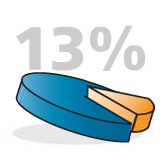Oman Internet Users
|
Oman Internet Users E-Commerce Spending in growing fast Arab Advisors new online survey of Oman’s Internet users revealed that 40.2% of adult Internet users in Oman have used e-commerce. The Arab Advisors Group estimates the number of Oman Internet users who use e-commerce to be growing very fast which is among the 68% of the total population internet users in Oman. A new major survey of the Internet users in Oman was concluded by the Arab Advisors Group. The survey report, Oman Internet Users and E-commerce Survey. he survey covered the Internet usage, e commerce, cellular and Pay TV usage and habits of the online community in Oman. Respondents were randomly targeted by receiving an email shot in their inbox to ask them to fill the survey in cooperation with Oman’s incumbent telecom operator, Omantel. The survey results encompass answers from 696 respondents that passed rigorous quality control checks. Quality control was conducted by Arab Advisors Group’s team. The survey was conducted on the general Internet population that is above 18 years of age. The online survey yields a confidence level of 99% with a margin of error of less than 5% “VoIP usage among Internet users reached 27.0%. 20.7% of total respondents use special software packages (Skype, GoogleTalk, etc) to make calls through the Internet. The majority of respondents (73.0%) do not make calls through the Internet. Oman - Telecoms, Mobile, Broadband and ForecastsOman possesses a technologically developed telecoms market due to investment by Oman’s two telecom network operators. Omantel and Nawras have invested significantly in fixed and mobile access networks. Broadband services are available in Oman via ADSL, Fibre-to-the-Home (FttH), WiFi, WiMAX, fixed wireless and mobile broadband. Broadband represents the majority of Internet connections and competition is predominantly infrastructure based. Mobile broadband now represents the overwhelming majority of total broadband connections. Oman has taken advantage of its geographical location to improve international Internet bandwidth and redundancy, with three new submarine cables entering service in 2012 and another one scheduled for service in 2015. Recognising the potential of applying ICT to improve both social and economic development, Oman has taken steps to develop a knowledge-based society. Government initiatives have been instrumental in creating the online services that make up this digital economy, encompassing the areas of education, health, government administration and smart grids. Oman’s mobile market continues its role as the most dynamic telecoms sector, mobile network operators OmanTel and Nawras compete against Mobile Virtual Network Operators (MVNO)s FRiENDi, Majan Telecom, Mazoon Mobile, Injaz Telecom and Samatel. Underpinning competition is implementation of mobile number portability, with Oman one of the first countries in the region to implement the regulatory requirement. Prepaid represents the overwhelming majority of mobile connections. Given the mature mobile voice market, both OmanTel and Nawras have shifted their focus to mobile broadband, deploying HSPA and LTE networks. Take up has been very successful, with mobile broadband subscriptions outnumbering fixed broadband subscriptions by over 15 to 1. One of the impacts of the increased proliferation of mobile Internet and smartphones has been the falling number of SMS/MMS messages sent. Click here For more information on Internet usage and Internet trends in the Middle East. 
|
|||||||||||||||||||||||||||||||||||||||||||||||










